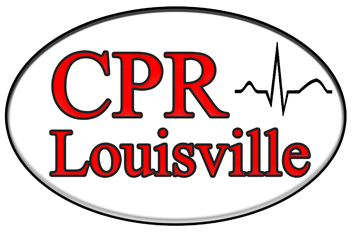Unknown Lab Report
Unknown Number 117
Joel Hentrich
April 29th, 2014
Microbiology
Spring 2014
INTRODUCTION
The purpose of this study was multifaceted: First, it was completed in order to gain a better understanding of how to utilize microbiological techniques learned within the classroom and laboratory environment. Second, utilizing those techniques allowed for the identification of two unknown bacteria. This aspect was crucial for many reasons; within the medical field, knowing what bacterium a patient has been infected with could mean the difference between life and death. Finally, the cumulative knowledge gained from this study aided students headed into the medical field by providing hands-on experience that could not have been provided from classroom instruction alone.
MATERIALS AND METHODS
A vial of two unknown bacteria was provided by the instructor, labelled number 117. Several microbiological tests were carried out in order to determine the identity of the unknowns. Throughout the study, while microbiological testing was being completed, procedures within the McDonald, Thoele, Salsgiver, and Gero (2011) lab manual were adhered to.
The first method used to identify the unknown bacteria was an isolation streak plate, which utilized four streaks of the unknown mixture onto a nutrient agar plate, via inoculating loop. This procedure was used in order to attempt to isolate separate pure colonies from the unknown mixture. The next procedure completed was the transfer of a pure colony from the isolation streak plate onto a separate nutrient agar plate. The purpose of this was to completely isolate the specific bacterium from the mixed colonies on the initial isolation streak plate (McDonald et al., 2011).
The third procedure attempted was a Gram Stain of the first isolated pure colony. The steps of a Gram Stain included heat fixing, dyeing, a mordant, a decolorizer (alcohol), and a counterstain. The reason a Gram Stain was attempted was to identify the type of bacterium and determine whether or not it truly had been isolated (McDonald et al., 2011).
Next, a Simmon’s Citrate test was performed. In order to complete this test, the isolated bacterium was spread across the Simmon’s Citrate slant, in order to promote growth. The purpose of this test is to determine whether or not a bacterium is able to utilize citrate as its sole carbon source (McDonald et al., 2011).
Following the previous test, an Indole test was performed via a SIM (Sulfur Indole Motility) test. In order to complete this test, several steps were taken. First, a flame sterilized needle was used to stab inoculate the SIM tube agar with the Gram negative bacterium. After being incubated, a reagent was added in order to test for indole production, as per procedures found in McDonald et al. (2011). The purpose of this test was to assist in confirming the identity of the unknown Gram negative bacterium.
Next, a urea test was performed on the Gram negative bacterium. For this test, the urea tube was loop inoculated with the isolated Gram negative bacterium. This purpose of this test was to determine whether or not the bacterium in question was able to produce urease, an enzyme that breaks down urea (McDonald et al., 2011).
The final test completed on the Gram negative bacterium was a Lactose test, specifically, EMB, also known as an Eosin Methylene Blue agar plate. For this test, the isolated Gram negative bacterium was streak inoculated onto the agar plate and incubated. The purpose of this test was to determine if the bacterium was able to ferment lactose and whether or not it produced a strong or weak acid, if at all (McDonald et al., 2011).
Next, a MSA, or Mannitol Salt Agar plate was swab inoculated from the original vial of unknown bacteria. The purpose of this test was to isolate the Gram positive bacterium. This was possible because Mannitol Salt Agar is a selective medium (along with differential) that only allows for the growth of specific Gram positive bacteria due to its high salt content (McDonald et al., 2011). Once incubated and growth formed, isolation of the Gram positive bacterium was confirmed via Gram Stain.
Secondly for this specimen, a Simmon’s Citrate test was used. In order to complete this test, the isolated bacterium (Gram positive) was spread across the Simmon’s Citrate slant, in order to promote growth. The purpose of this test is to determine whether or not a bacterium is able to utilize citrate as its sole carbon source (McDonald et al., 2011).
Third, a maltose test was performed on the Gram positive bacterium. For this test, the Gram Positive bacterium was loop inoculated into the maltose solution and allowed to incubate. The purpose of this test was to determine whether or not the bacterium could utilize maltose as its sole carbon source (McDonald et al., 2011).
Simultaneous to the Maltose test, a Mannitol test was also performed. Like the Maltose, this test utilized the same procedures, loop inoculating and allowing for an incubation period. The purpose of this test was to determine if the bacterium could ferment mannitol (McDonald et al., 2011).
The following tests were performed on the Gram Positive bacterium:
1) Simmon’s Citrate
2) Maltose
3) Mannitol
The following tests were performed on the Gram Negative bacterium:
1) Simmon’s Citrate
2) Indole
3) Urea
4) Lactose
METHOD RESULTS
Table 1 and 2 list all microbiological test, purposes, and results for each bacterium. The following flowcharts are also meant to demonstrate the path taken in order to determine the identity of each bacterium.
Table 1: Gram Positive: Tests
| Test | Purpose | Reagents | Observations | Results | |
| Gram Stain | Determine bacterium wall/bacteria type | Crystal violet, Iodine, Alcohol, Safranin | – | Purple Rods | Gram Positive Rods |
| Simmon’s Citrate | Determine if organism is able to utilize citrate as its carbon source | Citrate Tubes | 370C | Change from green to blue color | Organism is able to utilize citrate |
| Maltose | Determine if organism is able to utilize maltose as its carbon source | Maltose Tubes | 370C | No change in color, growth seen though | Organism is not able to utilize maltose |
| Mannitol Salt Agar | Isolate Gram Positive Bacterium | MSA Plate | 370C | Growth of organism | Able to isolate Gram Positive bacterium |
| Mannitol | Determine if organism is able to utilize Mannitol as its carbon source | Mannitol Tubes | 370C | Change from Red to Yellow, Growth | Contamination, should not have been able to utilize Mannitol |
Table 2: Gram Negative: Tests
| Test | Purpose | Reagents | Observations | Results | |
| Gram Stain | Determine bacterium wall/bacteria type | Crystal violet, Iodine, Alcohol, Safranin | – | Pink Rods | Gram Negative Rods |
| Eosin Methylene Blue Agar | Determine if organism is able to ferment lactose | EMB Agar Plate | 370C | Shiny, green, metallic color | Able to ferment lactose with strong acid production |
| Simmon’s Citrate | Determine if organism is able to utilize citrate as its carbon source | Citrate Tubes | 370C | No change in color | Organism not able to utilize citrate |
| Urea | Determine if organism is able to produce urease | Urea Tubes | 370C | No color change | Organism is not able to produce urease |
| Indole | Determine if organism is able to convert tryptophan into indole | SIM Tubes, Indole Reagent | 370C | Red color at surface of tube after adding reagent | Organism is able to convert tryptophan to indole |
DISCUSSION/CONCLUSION
Background Information
Gram Positive: Bacillus subtilis
Bacillus subtilis is a rod-shaped, gram positive bacterium. It is quite common in nature and has also been attributed as part of the human intestinal flora. This means that it is one of the “helpful” bacteria that aid our bodies. It is a common misconception that all bacteria are harmful, when in fact, we have billions, if not trillions living inside us (Swartzburg, 2009).
One of the interesting features of Bacillus subtilis is that it is capable of forming endospores when its environment becomes hostile. What this refers to is generally seen as the organism creating an extremely protective layer to shield its genetic material until a more hospitable environment comes about (Swartzburg, 2009).
Bacillus subtilis is also widely used within laboratories around the world. One of the main reasons for this is that it has a very high rate of genetic manipulability. Scientist use Bacillus subtilis in order to promote genetic research and due to its highly genetic manipulability levels, it is easier to conduct testing on (Swartzburg, 2009).
One final note on Bacillus subtilis is that this bacterium is aiding the fight against other harmful bacteria. Bacillus subtilis used to make several different types of antibiotics including, “difficidin, oxydifficidin, bacilli, bacillomyin B, and Bacitracin”. These antibiotics help facilitate quicker healing times for such things as burns, scraps, and certain skin infections (Swartzburg, 2009).
Gram Negative: Escherichia coli
According to Ahmed and Alam (2008), Escherichia coli is a rod-shaped gram negative bacterium. There are numerous strains due to frequent mutations and specific strains are known to be part of the human intestinal flora. It is commonly known as being harmful, but this is not always the case. While pathogenic strains of Escherichia coli may cause food poisoning and other issues, many strains are not harmful and in some cases beneficial (Ahmed & Alam, 2008).
DISCUSSION
Gram Positive: Bacillus subtilis
After the initial isolation of the Gram Positive bacterium, a Gram Stain was performed in order to confirm its Gram wall identity. Purple rods were observed under a light microscope, confirming this. The first test performed was a Simmon’s citrate, which resulted in a Positive reading. Knowing this, the next logical test to be performed would be a Maltose test, since this differentiated between the two possible remaining bacteria that were identified via the positive Simmon’s Citrate test. Once the Maltose test was confirmed as negative, it indicated that Bacillus subtilis was the unknown bacterium in question.
However, while a correct conclusion was derived through these two tests, problems were encountered. At the same time the maltose test was being completed, a mannitol test was run. While this does not initially seem logical, there are reasons behind it. When the Bacillus subtilis was isolated on the Mannitol Salt Agar plate, the color of the plate also changed from red to yellow. This was thought to be a positive reading for mannitol fermentation, until the instructor described about its potential inaccuracy due to it being an isolation attempt. Wanting to be sure that Mannitol fermentation was not possible for this bacterium, a Mannitol tube was inoculated with the Gram positive bacteria and incubated.
Bacillus subtilis is not able to ferment mannitol and yet the Mannitol test yielded a positive result. The conclusion drawn from this is human error during the inoculating process. It is believed that there must have been a mannitol fermenting bacterium somewhere along the length of the inoculating loop. During the flame sterilization, an error must have occurred in not flaming high enough along the length of the loop. Even though the Mannitol tube was inoculated with a non-fermenter (Bacillus subtilis), contamination is believed to have occurred by way of a Mannitol fermenting bacterium cell making its way into the test tube during the inoculating process.
Gram Negative: Escherichia coli
After the initial isolation of this bacterium, a Gram Stain was completed in order to confirm its bacterial wall structure as well. After viewing it under a light microscope, pink rods were observed, confirming this. The first test run on this bacterium was also Simmon’s Citrate. The result, coming back negative, indicated a need to differentiate between Escherichia coli and Proteus vulgaris. Because of this, an Indole test was run, via a Sulfur Indole Motility test, also known as SIM tubes. This was done in order to confirm a positive test for Escherichia coli and Proteus vulgaris (since Simmon’s Citrate was a Negative result).
The results for Indole were positive, leading to the confirmation that the Gram Negative bacterium was either Escherichia coli or Proteus vulgaris. Next, a Urea test was completed because it also differentiated between the two confirmed possibilities. A negative Urea test resulted, which suggested that Escherichia coli was the unknown bacterium. However, wanting to confirm with a positive result, a Lactose test was conducted. This test would garner a positive for Escherichia coli and negative for Proteus vulgaris, exactly the type of differentiation needed to confirm Escherichia coli.
An Eosin Methylene Blue Agar plate was used and the results came back as positive. Another helpful aspect of EMB agar is that it also differentiates between strong and weak acid production. According to McDonald et al. (2011) Escherichia coli produces a strong acid. Along with that, EMB agar produces a shiny metallic green coloring in the presence of strong acid production. The results of the lactose test not only showed fermentation, but a very shiny green metallic coloring. With the completion of this test, Escherichia coli was confirmed as the unknown Gram negative bacterium.
REFERENCES
Ahmed, A., & Alam, M. (2008, April 21). Escherichia coli. – New World Encyclopedia. Retrieved April 25, 2014, from http://www.newworldencyclopedia.org/entry/Escherichia_coli
McDonald, V., Thoele, M., Salsgiver, B., & Gero, S. (2011). Lab Manual for General Microbiology ( ed.). St. Louis: Meramec Community College.
Swartzburg, R. S. (2009, January 1). Bacillus Subtilis. Bacillus Subtilis. Retrieved April 25, 2014, from http://probiotic.org/bacillus-subtilis.htm





